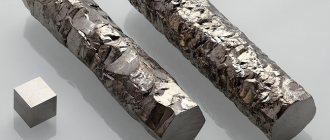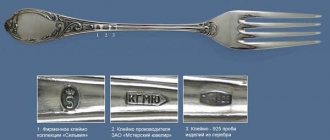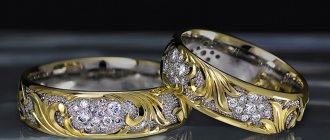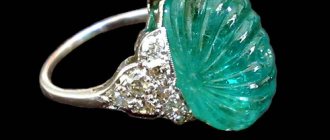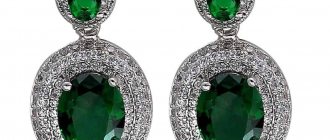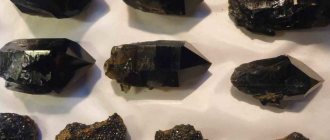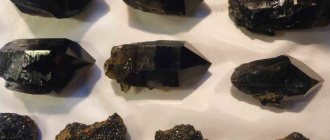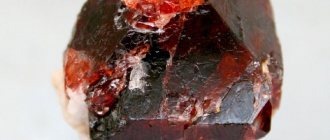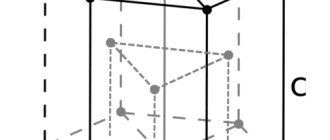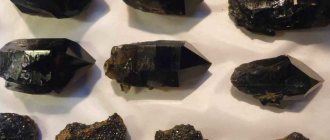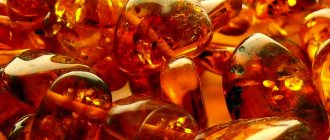Zircon stone is an extraordinary nugget, which is often confused with cubic zirconia and even diamond. It has a unique, bright glow that is sure to attract attention. But the popularity of the mineral is determined not only by its external beauty. The fact is that zirconium has enormous magical potential, therefore it has been used by esotericists around the world for several centuries. And its significant healing abilities were appreciated by people interested in alternative medicine.
Origin story
The zirconium gemstone is the only mineral currently known that can rival a diamond in its physical characteristics. The fact is that it has a similar level of gloss, a large selection of shades of transparent material. That is why zirconium has been revered since ancient times along with natural diamonds.
Zirconium is one of the most ancient minerals on the planet. According to conservative estimates by scientists, the age of the specimens found is at least four and a half billion years. Because of its rich palette of colors, zircon was undeservedly ignored by ancient people. In particular, in ancient Greece and Rome, zircon was confused with tourmaline, topaz and even citrine. The main reason for this is the similar golden, honey tones and bright shine of the transparent mineral. From the very beginning, black market scammers have been passing off zircon as a real diamond. Although it is easy to distinguish stones from each other, even with the naked eye. This scam takes place even in our time. In ancient times, when they tried to pass off precious stones as the hardest mineral on Earth, they said that this was a special kind of diamond brought from Ceylon.
In Europe, the mineral was recognized as a separate type of gemstone only in the mid-16th century. Until this time, jewelers called varieties of red, brown and reddish colors hyacinths, golden variations were called jargolits, and blue stones were called starlites. But such names were only confusing, since the physical and chemical characteristics were identical, only the appearance and color differed. It was decided to name the group of stones as one.
Magic properties
Esotericists highlight the main feature of zircon - a tendency towards justice, exposure, and revealing deception. The stone will faithfully serve an honest owner, giving the owner a special sense of hypocrisy and lies. But a stone will help a person with unclean intentions end up in prison.
Zircon is always where there is money, risks, and innovative ideas. This is a talisman of people who open new horizons - travelers, inventors, businessmen. Such qualities are closer to men. But for women there is also a useful property - for those who wear earrings with zircons and are engaged in scientific activities, the talisman promises increased logical thinking. Such decoration will also bring benefits to little schoolgirls - it will awaken the desire to study, perseverance, strengthen memory, and increase concentration.
The ancient Hindus used zircon as a talisman for young girls against temptation and vice. Hyacinths and jargons protected the European mercenaries of the Renaissance in battle. Such talismans helped brave men, but not cowards. Modern magicians, following the example of their ancestors, use zircon figurines of the double pyramid to enhance magical abilities - telepathy, the gift of foresight.
Physical properties
The physical and chemical properties of zirconium stone and its description began to be studied only in the middle of the 15th century. Then scientists determined that this stone is not a variety of other groups, but an independent element.
Zircon belongs to the subgroup of silicates. The crystal lattice often contains graphite, less often titanium, calcium and zinc. The color palette of the stone depends on the amount of metal impurities. There are specimens with thorium and uranium. A distinctive structural feature is the special structure of the crystal lattice in the shape of a pyramid. The diamond-type reflection in such options is presented to the maximum.
The crystal has high dispersion rates. When a ray of sunlight hits it, it undergoes double refraction. This property determines the characteristic radiance, flicker and glow of the mineral. The nugget is significantly affected by temperature. When fired, different colors appear, which jewelers use to create beautiful variations of the stone. However, if you apply only high temperature and do not fix the result in any way, then the zircon will quickly fade, and after a certain time period it will begin to darken and return to its normal color.
The Mohs scale is 7. While the diamond, with which the mineral in question is often compared, has a 10. The hardness characteristics of zircon are significantly lower than diamonds. Therefore, you can distinguish stones if you look closely at the cut.
Important! Zirconia will have slightly rounded lines as the stone is fragile. The edges of the diamond are sharp, not sharpened.
Main types, colors
Zirconium stone in jewelry is sometimes confused with a real diamond. It gives an indescribable glow and does not have a golden hue. Such specimens are the most valuable, but are rare. Minerals are divided into the following types:
- Jargon. It was initially mined only in Siam, but deposits have been discovered in other places on the planet. It is distinguished by a golden, honey hue, the color palette starts from straw and ends with almost brown.
- Matar Diamond. A type of gemstone characterized by transparent luster and the greatest luminosity. The refractive index of the sun's ray is maximum - it reaches the level of a diamond. Such variants are mined only in the south of Sri Lanka.
- Hyacinth. A stone that is suitable for creating romantic jewelry. Its reddish and pink, rich cherry, purple or raspberry tones will captivate at first sight.
- Starlit. The raw version is unremarkable. But as a result of firing, an interesting blue and blue tint appears. Starlite is suitable for creating discreet and sophisticated jewelry.
- Malacon. A rare specimen brought from parts of India. The composition contains radioactive elements and coating, which give an unearthly dark brown shade with streaks of burgundy or cherry.
Each zirconium is individual. Looking carefully at minerals that are initially similar in appearance, you begin to notice that they differ. Despite the popularity of this stone, it is not possible to find identical specimens in terms of saturation, level of transparency and color.
Zirconium crystals in jewelry
Zirconite is actively used in jewelry. It can be part of a composition or an independent insert. Cubic zirconia crystals look harmonious in jewelry made of silver, gold, and platinum. Large and well-cut cubic zirconias are used in jewelry instead of diamonds and are quite expensive.
Zirconium jewelry is in demand among all segments of the population. In most cases, transparent and blue stones of this type are in demand on the market. Thanks to their affordable price and beauty, they are purchased for everyday wear and special occasions. Knowing the fragility of zirconium, it is enclosed in a protective frame.
cubic zirconia in silver
Jewelry with zirconium can be divided into two groups. In the first - those that have inserts only of cubic zirconia of one or several colors. The second group includes products with a combination of stones. In this case, a precious stone is inserted into the center of the composition, and zirconite is added to the composition. This is how masterpieces of jewelry are born.
The well-known Swarovski crystals are also a type of cubic zirconium. They are in demand in America and Europe. On such crystals, using a magnifying glass, you can see the engraving “SWAROVSKI ZIRCONIA”. The inscription is not visible to the naked eye and does not spoil the appearance of the stone.
Many museums have replicas of precious stones made from this stone. Medals and orders are made with these crystals in many countries. Now you can even order piercings with cubic zirconia.
Difference between zirconium, zircon and cubic zirconia
Zircon is a natural mineral with high dispersion rates. It is quite fragile, which poses a problem for use in the jewelry industry. Cubic zirconia is a synthetic, artificial analogue of diamond. It was grown in laboratory conditions in 1968 in Russia. Cubic zirconia is widely used in the jewelry industry, as it is much cheaper than diamonds, but is similar in appearance. A few years later, American scientists adopted the development of Russian scientists. They created an improved version of cubic zirconia and called it cubic zirconia. For some reason, scientists and jewelry industry experts got confused. Zirconium began to be called not only synthetic stones, which they essentially are, but also natural ones. The natural mineral is now called both zirconium and zircon. It is better to clarify the origin of the presented insert in the jewelry directly from the manufacturer or an employee of the jewelry house.
Features and differences
Zircon and zirconium are two names that sound very similar, but have different material characteristics. Zircon (zirconium orthoxylate ZrSiO4) is a natural mineral whose properties are not inferior to other semi-precious stones. Zirconium is a silver-gray metal chemical element (Zr) that has atomic number 40 on the periodic table.
Cubic zirconia is a synthesized crystal, zirconium dioxide (ZrO2). It is also known as fianite, which received it in honor of the institute where it was developed (FIAN, Physical Institute of the Academy of Sciences). A method for obtaining it in laboratory conditions was developed by a group of scientists in the seventies of the twentieth century in the USSR. Crystals intended for laser production have attracted the attention of jewelers due to their diamond-like properties.
It took over 10 years before scientists were able to grow large crystals suitable for use in jewelry. These stones have the following names: in the USA - shelby, daimonesque, in Switzerland - jewalite, in Austria - zirconite. In other countries - Cubic Zirconia (CZ). It includes the characteristics of the crystal (material, cubic lattice).
Cubic zirconia crystals grow quickly, up to 10 mm per hour. But after cutting, the finished stone is only 15% of its original size. Due to the fragility of zirconium, it is first given a round shape and then cut. Processing this stone requires high skill and special tools. Despite all the difficulties, the production of cubic zirconium is cheaper than the extraction of precious and semi-precious stones.
Cubic zirconias produced with violations of technology lose their properties and are considered fakes.
Cubic zirconia is very similar to diamond. But, unlike diamond, it has a transparent color without shades or inclusions. And its weight is twice as much as the weight of a similar gemstone. Visually, they can be distinguished by shining a beam of light onto the crystal. In a diamond, the ray will refract only once, but zirconium will delight the eye with many refractions. Cubic zirconias play brighter in the light, but if used carelessly, they fade and nicks may appear on them.
Colored versions of zirconium are obtained when impurities of titanium, iron, zinc, copper, uranium, and strontium are added to the main composition during production. Thanks to this technology, crystals of more than 10 colors are obtained. Such a wide range of colors leads to the fact that they are confused with other stones. Painted stones fade over time from constant exposure to sunlight. Instead of dark red zirconium stones, you can purchase corundums (artificial rubies), as they are harder and easier to care for.
What stones does it go with?
If the stones are not combined correctly, they can absorb each other's energy or resonate. Esotericists say that such an effect has a detrimental effect on a person. Natural zircon is best combined with sapphire, carnelian, agate, beryl, coral, amethyst, turquoise and emerald. Sometimes you can wear it with topaz if the situation requires it. A combination with jasper, opal, aquamarine, quartz, garnet, moonstone and chrysolite is undesirable.
Reference. It is better not to take risks and not allow zirconium to be combined with obsidian, malachite, sardonyx and onyx in one image, much less in one piece of jewelry.
Who is zircon suitable for?
Zirconium is the stone of successful and assertive people. Since ancient times, it was considered an amulet of businessmen and politicians. If you strive to gain weight in society, then choose jewelry with it. The amulet is also suitable for those who travel a lot. It protects you on the road and helps you establish friendly connections. Please note that zircon:
- yellow shade - suitable for those who want to attract passionate love, sensuality and pleasure into their lives;
- completely transparent - indispensable for people who cannot make decisions;
- orange tone - will give optimism and self-confidence;
- blue tint - will help normalize relationships in the family and with children;
- green color - will have a positive effect on the ability to manage finances.
A universal stone is selected according to the horoscope, taking into account the zodiac sign. Suitable for almost everyone, but will bring the greatest benefit to Libra and Gemini. Leos and Aries are not recommended to wear it, as it enhances the meaning of emotions, as a result of which representatives of the fire element become impatient, aggressive and quarrelsome.
How to wear and care
According to the Mohs scale, the mineral is quite brittle. In order for you to enjoy your jewelry for many years, you need to provide appropriate and regular care. Note that:
- It should be stored away from other stones to prevent accidental scratching.
- It is worth choosing jewelry in a durable frame made of silver or gold, as the inclusion may fall out;
- The insert cannot be cleaned with chemicals or abrasives - the zirconium will instantly be scratched and lose its appearance.
- You should regularly wipe the mineral with a soft flannel cloth.
Zirconium in a ring or necklace is not only a stylish, unusual stone in jewelry that will suit anyone, regardless of the color type of appearance, physical characteristics, age and how the image looks. The nugget has a lot of magical and medicinal properties. Knowing the designation and correctly using the stone in jewelry, you can achieve positive improvements in life.
Zircon and zirconium in jewelry
Both are used to imitate diamonds in gold, silver and costume jewelry. At the same time, zirconium copes with the task more successfully than zircon; even a specialist will have great difficulty distinguishing zirconium sparkling with a brilliant shine from diamond without special research. Zircons, when examined closely, create numerous light refractions, unlike diamonds, which refract a beam of light once.
In jewelry, inserts made of zirconium are much more common than those made of natural zircons. The reason for this is the scarcity of deposits of the stone; it is found in small quantities in Brazil, Australia, Thailand, the Urals and Yakutia, as well as on the island of Madagascar. Zircon is a semi-precious stone; buying jewelry with zircon is quite an expensive pleasure.
Zirconium as an artificial material is more affordable, but especially large specimens can be expensive. Zirconium looks equally good both in products made from precious metals and in costume jewelry. It is used in compositions made from different types of stones or as a substitute for diamonds.

